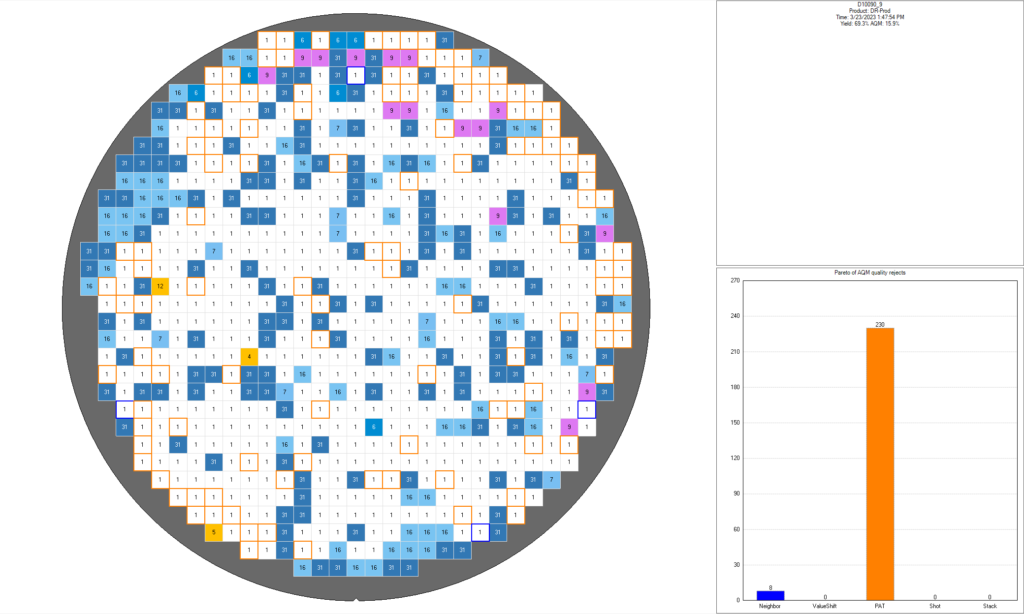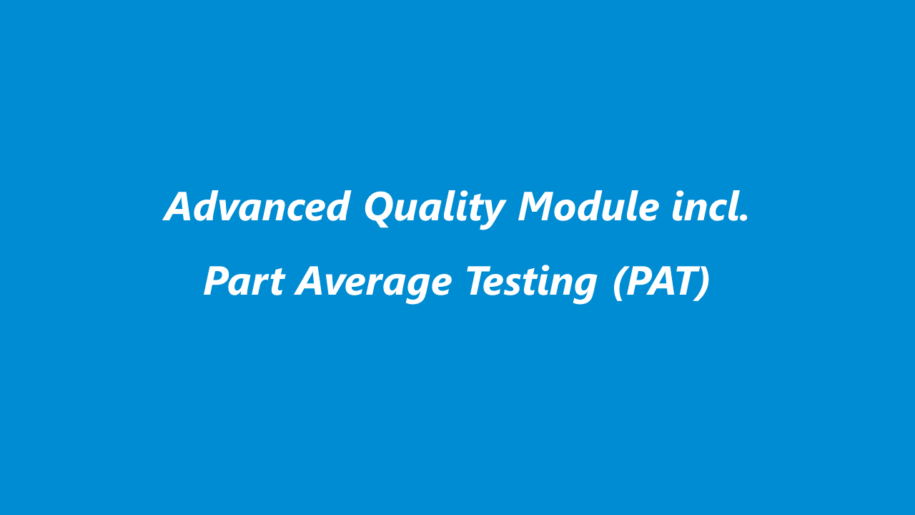Automotive and other quality-critical microchip suppliers have specified and rigorous requirements in order to achieve zero defects and enhance quality control and reliability.
Advanced Quality Module was designed specifically for these device manufacturers as it includes not just Part Average Testing (PAT) but also a powerful set of functional tools necessary to facilitate the detection and analysis of potentially quality-compromised parts.
The main goal of Advanced Quality in semiconductor test and yield analysis software is to identify integrated circuits (ICs) that pass test limits while simultaneously showing suspicious deviation from the performance of the majority of tested parts or are located in the vicinity of failed devices.
The Advanced Quality is based on:
- Neighborhood Rules
- Value shift between different measurements
- Part Average Testing (PAT) – static, dynamic, gap based
- Shot analysis
- Stack analysis
Part Average Testing (PAT) is one of the primary features of the Advanced Quality Module. However, as there is no normal distribution assumption, the identification of quality-compromised ICs goes far beyond PAT.
Neighborhood rules
Neighborhood rules in yield analysis software identify the number of neighbor chips that are failed devices. This tool is used to check next neighbors of each failed device on an integrated circuit (IC).
Value Shift
Value shift is a calculation of the differences between subsequent measurements of the same part. The value shift tool compares different measurements on the wafer over time and checks if they have changed. If a shift in the values occurs, the value shift tool flags the shift that is too high. For example, if the temperature changes the parameters significantly or more than expected, those values are then flagged.
Value shift can be taken from pre-burn-in and post-burn-in or high-temp and low-temp test.
Pre-burn in and post-burn in tests involve applying age and stress to the devices whereas high-temp and low-temp tests involve exposing chips to high and low temperatures to test the resistance of the devices.
Part Average Testing (PAT)
As already mentioned, part average testing is extremely important for quality critical areas, especially for the automotive industry.
Part Average Testing or PAT is a statistical method used for outlier detection.
By implementing PAT, product engineers can identify every die with parametric characteristics falling outside a statistically calculated pass-fail limit. Upper and lower PAT limits are calculated based on statistical data and everything outside of the PAT limits is scrapped.
The outlier detection can be static, dynamic or gap-based. Robust variants exist as well.

Static PAT: upper and lower PAT limits are calculated once and applied for every x lots or y days.
Dynamic PAT: limit calculation for each wafer is based on current test data. Dynamic PAT can only be applied after static PAT.
Gap-based PAT: screening of parts that deviate significantly from bulk distribution (robust for non-Gaussian distributions). This tool checks whether there is a bulk distribution and if there is a certain gap from the bulk distribution.
Robust Variants: median instead of mean, IQR instead of standard deviation.
Shot analysis
Shot analysis allows the screening of chips at a litho-shot or test site position where at least x or y % of all other chips in the same position fail. It searches for repeaters from a litho-shot, but is mostly focused on incomplete repeaters.
Stack analysis
Stack analysis, also known as Z-PAT, allows the screening of chips at those coordinates where at least x or y % of all other chips in the same position on the wafers within one lot fail.
Stack analysis flags remaining devices in a stack and screens those out.


